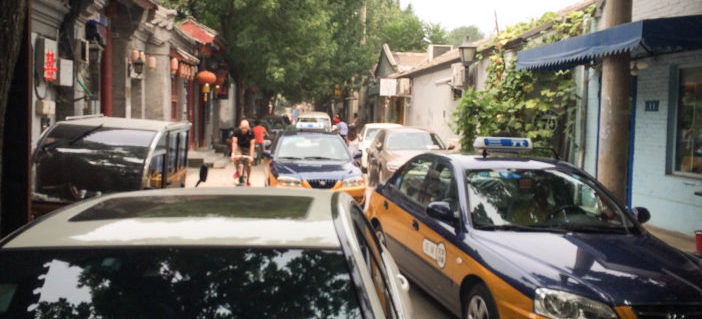Xinhua is reporting that Beijing will ban motorized vehicles from hutongs as part of the city’s general clean-up-the-core campaign. Motorized vehicles – which includes motorcycles (no word on electric-powered vehicles) – will be banned from parking in streets narrower than five meters. Streets less than nine meters across will be restricted to one-way traffic only.
It’s not a full-on ban on cars in the hutong, which would do more to improve the city core than all the bricks in the Great Wall, but it’s a start.
Of course, the government still has to enforce the policy, and if Smoking Ban versions 1.0-3.5 are any indication, trying to get the man-pursed cadre brigade to follow rules which inconvenience them but make life better for the rest of us has always been something of a sticky wicket.
Motorized traffic has been restricted in the hutongs around Nanluogu Xiang for a couple of years now, but this writer has personally witnessed several incidents in which the drivers of official-looking cars verbally browbeat the poor Hebei farm kid in charge of guarding the gate into letting the cars pass.
Still, it’s nice to see the municipal government taking seriously the issue of traffic in the narrow streets of Beijing’s historic neighborhoods. It makes no sense at all to have folks in a minivan or SUV barreling down both ways in a hutong already choked with cars parked on each side of the lane. It’s a safety issue and seriously detracts from the city’s stated goal of preserving the historic character of Beijing’s core.
Of course, karma being what it is, the same Xinhua story also noted that non-historic buildings in the “Core Area” will need to be restored to their original form and structure. Along with the “Great Brickening,” authorities have also decapitated several hutong businesses and residences in Dongcheng by ordering the removal of second stories or rooftop terraces. With the government under the gun to decrease the population of Beijing’s urban core, look for city management types to continue to take aim at renovated or modified courtyard structures – whether they abut the street or not – in the coming spring/summer demolition season.
Jeremiah Jenne is a writer, educator, and historian based in Beijing. You can find him on twitter @JeremiahJenne.
This is an abridged version of the post that first appeared on our sister site, The Beijinger.
Photo: National Geographic




